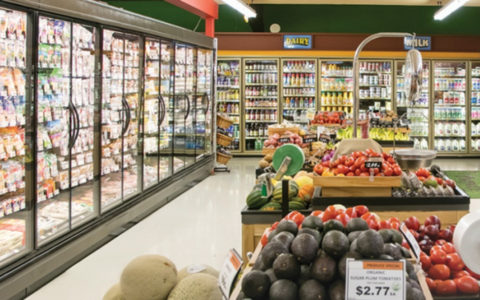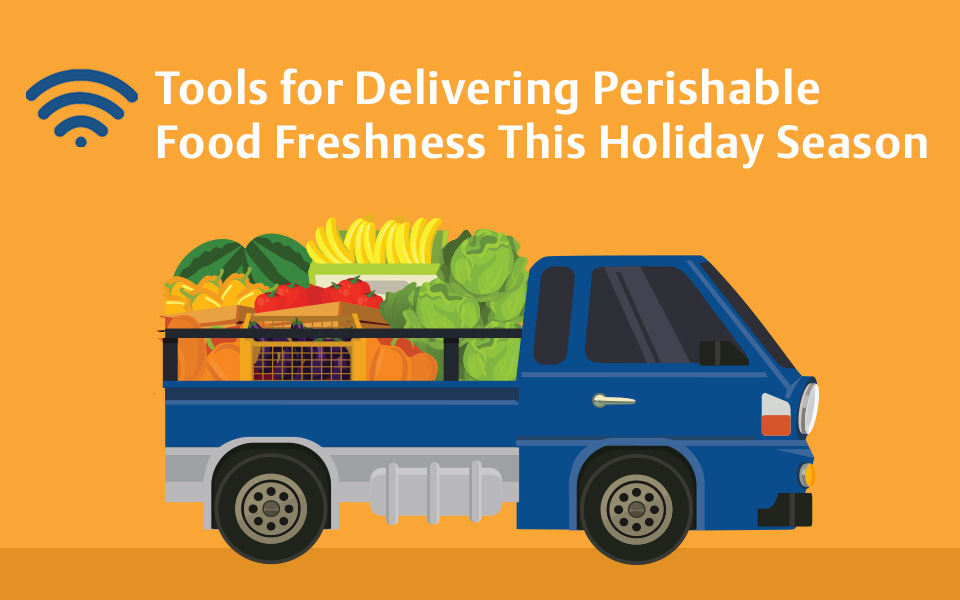Trends impacting the supermarket refrigeration landscape

During our E360 Forum last year in Houston, I led a Q&A panel discussion on the trends and market forces impacting the refrigeration landscape in food retail. Sharing their thoughts and insights were industry experts Derek Gosselin, director, technical product support, Hillphoenix; and Brad Thrasher, south central regional sales manager, Zero Zone. Below are some of their views on key trends; view the full E360 Forum presentation.

The Changing Face of Food Retail
Thirsty from wandering the aisles of your local grocery megamart? How about a craft beer break? Or maybe shopping for food just makes you hungry. Grocery shoppers today can virtually eat their way around the world as in-store food bazaars offer freshly prepared ethnic fare: Mexican “street food”, noodle bowls and wood-fired pizza. No time to shop? There’s always curbside pick-up of weekly grocery staples on your way home from work — just click and collect. And today, going small has never been bigger, with millennials and Generation Z flocking to urban areas and higher-density living. It’s no surprise that smaller-footprint grocery and food specialty stores are popping up in mixed-use buildings that were never intended to support things like complex refrigeration or HVAC systems.
Yes, the face of food retail is changing. And with this change comes a host of new opportunities (and challenges) for commercial refrigeration. I’ve summarized some of the key takeaways from this informative question and answer session.
On e-commerce, omnichannel and digital shopping
The first topic of discussion was the impact of the digital shopping trend. Today, more consumers are shopping for groceries online. I asked the panelists how brick-and-mortar retailers were responding.
Thrasher: I’ve seen some reports (FMI-Nielsen) that say that online grocery sales could grab up to 20 percent of the market. That seems pretty aggressive to me. But it’s definitely a rising trend. Traditional food retailers are responding by adding services like curbside pick-up. They are making home deliveries. You have to adapt to whatever direction the market is going.
Gosselin: For the retailers, it’s about what identifies them as different. Amazon is driving sales directly online. What can you offer to differentiate yourself, not only from online shopping, but the competition in your marketplace? Many stores have found success creating destination centers within their produce and other perimeter departments: food preparations, beer and wine tastings, restaurants, meals-to-go programs. That’s where the trends are going to be. And, of particular interest to everyone here: How do make sure you have appropriate refrigeration at these dynamic destination centers so that they can control your food quality and get it efficiently distributed?
On Click-and-Collect
Building on the idea of curbside service, I asked our panelists about the grocery pick-up lockers that are popping up everywhere and what that might mean for the future.
Gosselin: If you’re going to offer perishables as part of your curbside pick-up, you’re going to need to incorporate refrigeration. And it’s not just with in-store click-and-collect programs. I’ve also seen trends where retailers will place a portable refrigerated unit on your porch, so when they deliver fresh food or frozen items, they have a convenient and appropriately refrigerated location. Most consumers are probably not going to give you the key to their home.
Thrasher: Many stores are looking at self-contained or hybrid systems. Future refrigeration will need to be more flexible so that retailers can expand quickly and easily. If your curbside (pick-up) starts minimally but grows quickly, you’ll want a flexible, easy-to-implement solution so you can move quickly to serve customer demand.
Curbside pick-up is a relatively recent phenomenon. To add it as service, you have to dedicate and adapt more space in your store. But that doesn’t come without cost and questions. As we all know, for everything new you add in-store, something else will probably need to come out.
On the future
Before jumping into an audience Q&A, I asked the panelists how their retailers are dealing with change and some of the main factors driving their refrigeration decisions.
Thrasher: No one knows with certainty where the future will go. Some decisions will continue to be informed by technology and regulatory changes. And, certainly, costs always play a critical role. With refrigerants, for example, as regulations come, they may eliminate possibilities. It’s hard to go “all in” into a refrigerant when it could eventually be obsoleted, driving costs up for replacements. The same concept applies to system architectures.
Gosselin: How do you get in front of change? Do you go micro-distributed? Do you use natural refrigerants? What technologies will be developed in answer to changing rules?
For the end user, the challenge is not only what do they have to do to maintain their current fleet of stores, but what are they going to do for future stores so that they don’t add to the problems? And then how do they do that under a cost-effective and compliant refrigerant management program?
Thrasher: The bottom line is that there’s simply no one solution for everyone. Every retailer has a different set of objectives and challenges, influenced by regulations, technology and costs, but ultimately driven by the evolving needs of the markets they serve.
To take a deeper dive into our discussion, be sure to watch the full E360 Forum session.

Seven Keys to Demystifying CO2 Refrigeration
by Andre Patenaude | Cold Chain
The U.S. commercial refrigeration market is poised for a surge in the use of CO2 (R-744) as a...

Tools for Delivering Perishable Food Freshness This Holiday Season
by Doug Thurston | Cold Chain
More than any time of year, food is a central attraction of the holiday season. Sharing, preparing...
![[Webinar Recap] Five Ways to Improve Cold Chain Oversight](https://e360blog.emerson.com/wp-content/uploads/2022/12/14640_OversightWebnar_WrpUpBlg_960x600.jpg)
[Webinar Recap] Five Ways to Improve Cold Chain Oversight
by Dan Knauer | Cold Chain, Transportation
For perishable cold chain stakeholders, preserving the quality and integrity of goods throughout...
The post Trends Impacting the Supermarket Refrigeration Landscape appeared first on Emerson E360 Blog.